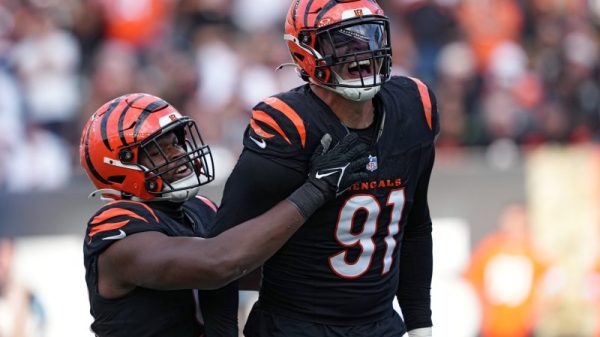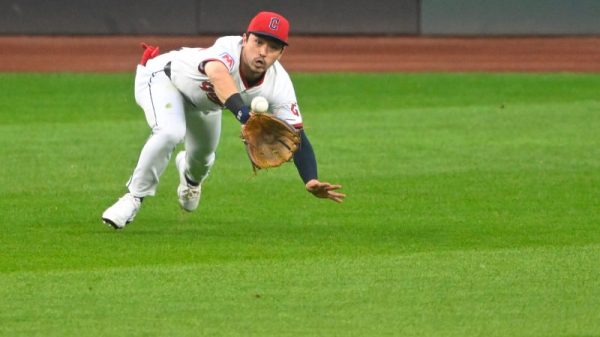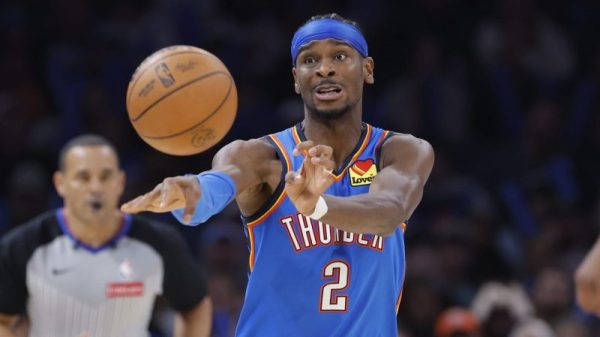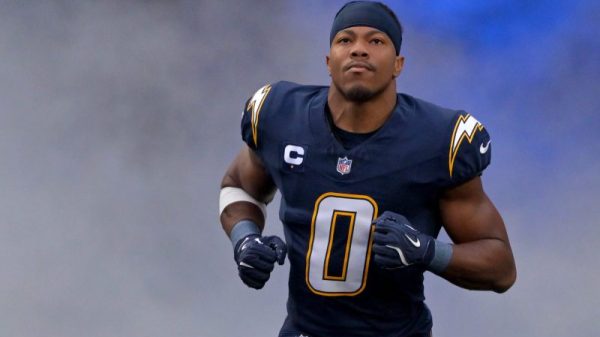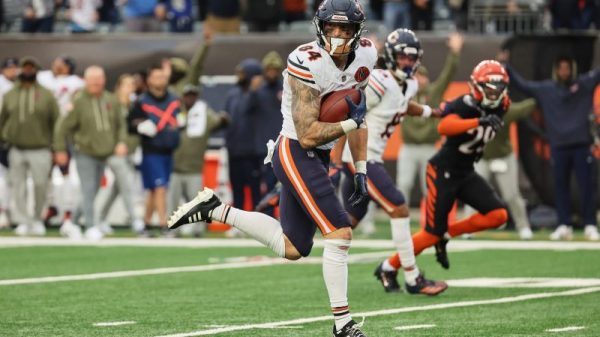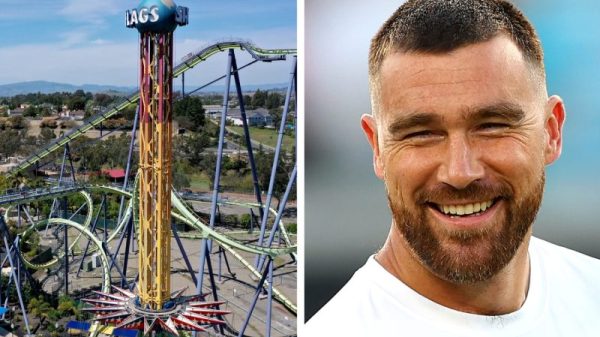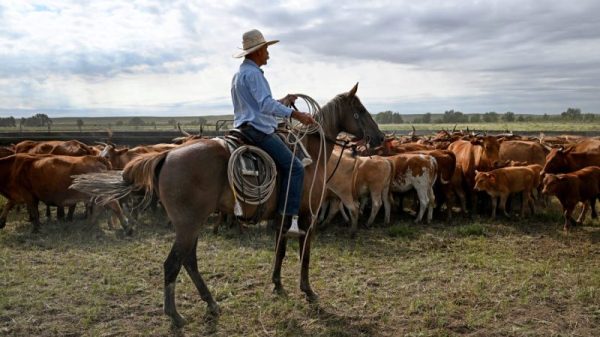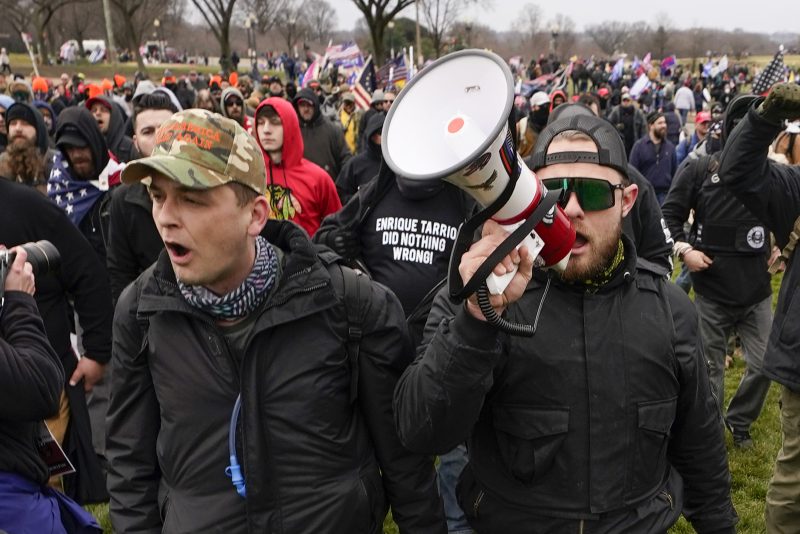When rioters broke into the U.S. Capitol on Jan. 6, 2021, and forced lawmakers into hiding, Proud Boys chairman Henry “Enrique” Tarrio was miles away, watching the chaos unfold from a hotel in Baltimore.
Two years later, Tarrio and four other members of his right-wing group are on trial in federal court in D.C. on charges of seditious conspiracy in a case that will test the limits of a rarely used law. The Justice Department is fresh off victories on the same charge against Oath Keepers founder Stewart Rhodes and a top deputy; three associates were acquitted of seditious conspiracy but convicted on other felony charges.
Again, prosecutors will seek to convince a jury of twelve D.C. residents that the Jan. 6 riot was not the spontaneous outburst of a misguided mob but an assault on democracy galvanized by dedicated extremists. After Rhodes, Tarrio is the highest-profile figure to face trial in an investigation where more than 930 people have been charged federally. Jury selection in the trial has taken two weeks. Testimony is expected to begin Tuesday.
What to know about the Proud Boys sedition trial
End of carousel
The two groups are loose confederations of far-right supporters of former president Donald Trump who showed up at protests around the country in 2020. Members were in contact before Jan. 6, having coordinated at earlier pro-Trump events in D.C. that turned violent. Rhodes and Tarrio were in a chat group with Trump confidant Roger Stone that was active during the riot, and Rhodes and Tarrio met in a parking garage the night before the attack. Neither of the men went into the Capitol on Jan. 6. But, in important ways, the two groups are distinct.
Rhodes, a Yale Law graduate, founded his group as an association of veterans and former law enforcement members loyal to the radical belief that the U.S. Constitution justifies violent rebellion against the government. The Oath Keepers modeled themselves after the military, staging a weapons outside D.C. for a “Quick Reaction Force” and designating “commanders” for “missions.” At trial, they emphasized their peaceful presence at earlier D.C. rallies.
The Proud Boys were started by a founder of Vice magazine, and they advertise themselves as a drinking club for men who “refuse to apologize for creating the modern world.” From the beginning, members would regularly get into street brawls with political opponents. Matthew Kriner, a scholar at Middlebury Institute of International Studies who studies domestic extremism, said many Proud Boys ascribe to the idea that if they hasten societal collapse, a fascist government will emerge.
“The Proud Boys always saw themselves as the outsiders seeking to radically influence the system, rather than the Oath Keepers, who looked at themselves as the guardians of the republic,” Kriner said. “The Proud Boys want to be the catalyst of the chaos.” Tarrio was not in D.C. on Jan. 6 because he had been arrested for burning a church’s “Black Lives Matter” flag at a protest in the city in December.
Prosecutors had strong evidence that Rhodes spent weeks pushing to keep Trump in power by force but less proof of planning for or engaging in violence specifically on Jan. 6. At Rhodes’s trial, prosecutors argued that the U.S. Capitol breach may have been a surprise to the Oath Keepers but was nonetheless used by the group to further its seditious goals. By contrast, the strongest evidence against the Proud Boys comes from on and around Jan. 6, as they discussed storming the Capitol and members of the group engaged in violence. The government’s challenge will be tying that to a broader political plot.
The Proud Boys trial is expected to provide a new, more panoramic view of violence around the Capitol on Jan. 6, drawn from the cases of more than 48 Proud Boys members or associates who have been charged, and at least 16 who have pleaded guilty.
“Actions many times speak louder than words, and in this case, you have clear acts of violence in an effort to influence the politics of the government or to change our social structure,” said Tom O’Conner, who investigated domestic and international terrorism during two decades at the FBI. “I think their talk of change of society, along with the violence, potentially could meet the standard” of seditious conspiracy.
The trial also could illuminate the security failures that left the Capitol so vulnerable to attack. The House committee investigating the Jan. 6 attack wrote in its report in December that federal law enforcement and intelligence agencies “did successfully detect the planning for potential violence on January 6th, including planning specifically by the Proud Boys.” Defendants have said a D.C. police lieutenant named Shane Lamond was aware of their Jan. 6 preparations; Lamond is under criminal investigation.
Like the Oath Keepers, the Proud Boys say their plans for Jan. 6 were defensive, not offensive.
On Dec. 19, after Trump tweeted that Jan. 6 in D.C. would “be wild,” a defendant told Tarrio they needed to stop “recruit[ing] losers who wanna drink … and get real men,” according to the court records. They formed a smaller leadership group to prepare.
John Stewart, a Proud Boy who is cooperating with the Justice Department, told other leaders on Jan. 3 that “the main operating theater … should be out in front of the Capitol building.” The following day, court records show, Tarrio responded, “You want to storm the Capitol.” Tarrio was also given a blueprint for occupying government buildings based on the 1917 Russian Revolution; after the riot, he appeared to refer to that idea by comparing the attack to the storming of the Russian emperor’s Winter Palace.
While the Oath Keepers defendants provided security for speakers at Trump’s rally at the Ellipse on Jan. 6, the Proud Boys headed to the Capitol before the speeches were over. According to prosecutors, the four men charged along with Tarrio — Ethan Nordean, of Auburn, Wash.; Joe Biggs, of Ormond Beach, Fla., Dominic Pezzola, of Rochester, N.Y., and Zachary Rehl, of Philadelphia — were part of the first breach of barriers blocking access to the Capitol grounds, at 12:53 p.m. on Jan. 6. Video evidence indicates Pezzola was the first to break a window of the building, at 2:12 p.m.
None of the Oath Keepers on trial in the recent seditious conspiracy case were accused of assaulting police; all of the Proud Boys are. (One Oath Keeper was charged with impeding police inside the building, a crime she admitted to and apologized for on the stand.)
“Unlike the Proud Boys, we don’t … street brawl,” Rhodes told the House committee investigating Jan. 6, in an interview released last month. He said he withdrew from a Portland event with the Proud Boys because “a notorious ex-Nazi” was involved.
“I don’t believe Proud Boys are white nationalists,” Rhodes said. “I think they’ve been sloppy and let white nationalists infiltrate their group.”
At the trial, the Justice Department wants to use video of violence and destruction caused by people not affiliated with the Proud Boys but who prosecutors argue served as “tools” for the group. The Proud Boys would never have succeeded in breaching the Capitol without “weaponizing the crowd,” prosecutors wrote in court filings.
The same narrative is echoed in the House report. “The Proud Boys led the attack, penetrated the Capitol, and led hundreds of others inside,” the lawmakers wrote.
The Proud Boys say they cannot be held responsible for the actions of others in a large crowd. They are also seeking to limit the introduction of evidence that members of the Proud Boys engaged in violence at earlier D.C. protests, used racist and sexist language and made derogatory comments about liberals and Democrats.
“The Proud Boys group is one of the most reviled in the country,” Nordean’s attorney wrote in one filing, and the government’s evidence is “designed to arouse the jury’s anger, emotion and partisan prejudice.”
Judge Timothy B. Kelly has said he will decide on whether evidence will be admissible at trial as it comes in. But he barred prosecutors from saying why Tarrio was arrested before Jan. 6, while allowing in some “offensive” language. “The jury has a right to hear the way these defendants speak,” he said at one motion hearing.






